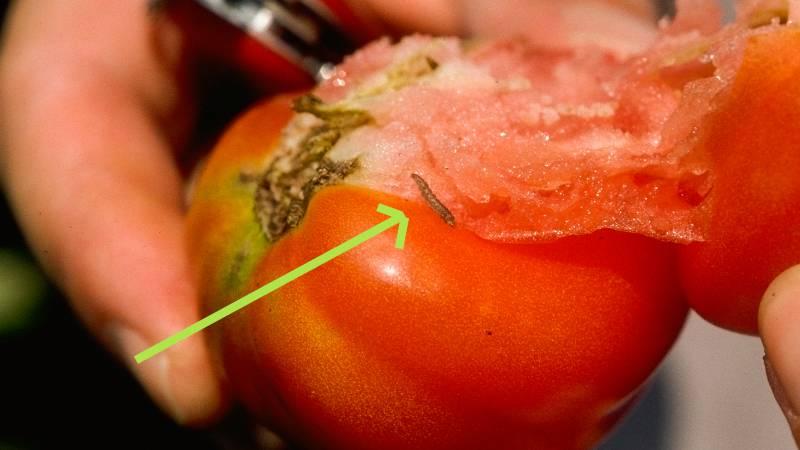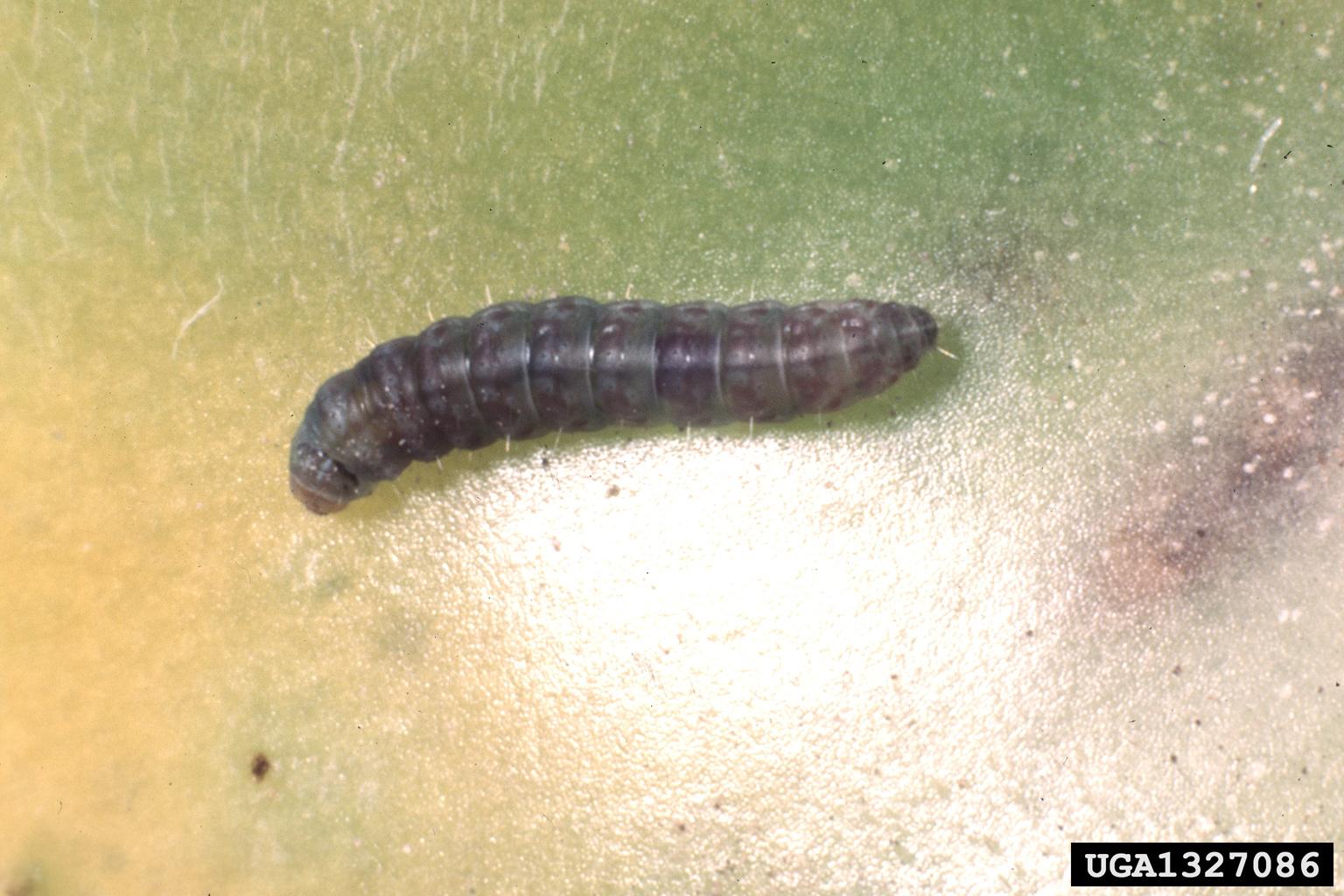Appearance
- Eggs: Minute, elliptical, light yellow or orange eggs, deposited in small groups of 3-7 on both upper and lower leaf surfaces. Eggs are very difficult to detect.
- Larvae: Newly hatched larvae are tiny, yellowish-gray, with a brown head. As larvae mature, they turn mottled orange-brown to purplish black and reach about 1/3” in length.
- Pupae: Green at first, then turning brown, about 1/5” long.
- Adults: Small grayish moth with fringed wings and a wingspan of about 1/2".

Life cycle/habits
- A hot region pest, tomato pinworms must overwinter in greenhouses or come in on shipped transplants. They are not common in Maryland.
- 4-5 generations a year are possible, each having 4 larval instars (growth stages).
- Young larvae tunnel into leaves and feed in leaf mines.
- Later instars fold leaves and live and feed within the fold.
- Older larvae may also tunnel into fruit, causing significant damage.
- Mature larvae drop to the soil on a silk thread, spin a loosely woven pupal cell mixed with soil particles, and pupate at or near the soil surface.
- Moths are nocturnal with most mating occurring just after sunset.
Host plants
- Tomato primarily, but also eggplant and potato, as well as some nightshade weeds.
Signs/symptoms
- Newly hatched larvae spin a shallow web covering where they mine into the leaf and then create narrow straight or serpentine mines as they tunnel through leaves.
- Frass (insect poop) is deposited in a single mass at entrances of mines.
- Older instars make blotch mines next to their leaf fold.
- Most damage occurs when larvae enter fruit near the stem, mining just below the fruit surface or in the core.

Monitoring
- Inspect transplants or young plants closely for serpentine or blotch mines, folded leaves, webbing, or frass deposits at leaf mines. Look under the calyx near fruit stems for tunnel entrance. Look for mine blotches under the fruit skin.
Prevention/control
- Purchase only clean transplants.
- Handpick mined leaves and dispose of them in trash bags.
- This pest has many wasp parasitoids.
- Quickly use infested fruit.
- Sanitation is very important: dispose of infested fruit or crop residues.
